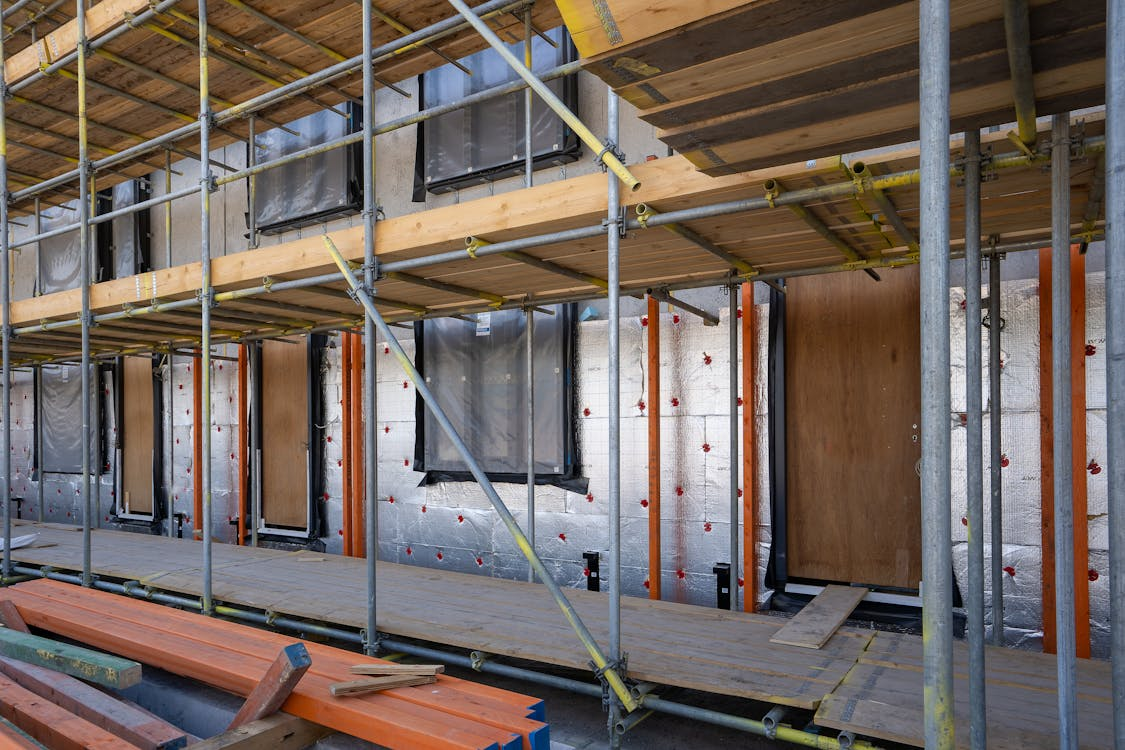The renowned author and motivational speaker Zig Ziglar once said, “You don’t have to be great to start, but you have to start to be great.” The realm of real estate investing is no different. Starting with a solid foundation rooted in sound financial analysis is essential to unlock greatness in the property market.
But how does one pave a path toward stellar returns without wandering into the forest of financial blunders? The art of real estate financial analysis is a bit like cooking a gourmet meal; it’s all about the right ingredients in the right proportion. We’ve prepped the perfect recipe for you today. Let’s dive in, shall we?
1. The Magic of Real Estate Loans
While real estate loans are often seen as mere financial instruments, they carry a touch of magic for investors. They represent the power of leverage and allow one to control large assets with a fraction of their actual value. With a traditional mortgage, an investor may only need to put down 20% and yet control 100% of the property. This leverage magnifies potential returns.
For instance, if a real estate investor buys a property for $100,000, puts down $20,000, and the property appreciates by 5% in a year, the return isn’t just 5% of the $20,000. It’s 5% of the full $100,000. This means a $5,000 gain on a $20,000 investment: a whopping 25% ROI.
The tax benefits that come with real estate loans cannot be ignored. Interest on the loan can often be deducted. The outcome? The overall tax burden is lowered. These loans also ensure capital preservation; investors can spread their capital across multiple properties instead of sinking it all into one.
2. Understand the Market Dynamics

The real estate market isn’t a stagnant pool; it’s more of a fluid river that continuously moves and evolves based on numerous influencing factors. Understanding market dynamics means appreciating the factors that drive real estate demand and supply curves. Economic indicators, interest rates, local job market trends, and population growth are some of the key determinants.
For instance, a city with booming job opportunities may witness an influx of population, create higher demand for housing, and push property prices upwards. Conversely, if a major employer shuts down or relocates, it could result in a decline in housing demand and a potential decrease in property values.
Interest rates play a pivotal role too. Lower interest rates make borrowing cheaper and encourage more people to buy homes. The converse holds true for high-interest regimes.
Understanding seasonal patterns is also essential. Historically, spring tends to be a hot market with more listings and buyers, while winter may cool things down a bit. But these aren’t steadfast rules; they’re just trends to be aware of.
An investor must wear a researcher’s hat to tap into the market dynamics. Periodically study market reports, keep abreast of economic news, and understand global events to gain insights. After all, in this era of globalization, a financial crisis halfway around the world can impact property markets domestically.
Recommended Read: A Roundup of the Most Landlord-Friendly States for Real Estate Investors in 2023
3. Cash Flow Calculations
Cash flow represents the net amount you pocket each month after all expenses have been settled. To break it down, start by calculating your gross monthly rental income. Then, subtract all fixed and variable costs like mortgage payments, property taxes, insurance, management fees, and maintenance costs.
Why is this calculation so important? A positive cash flow indicates that your property isn’t just self-sustaining but also generating a profit. It ensures you’re not dipping into your pocket to cover costs and provides a safety cushion for unforeseen expenses.
But cash flow isn’t just about the here and now. It also offers insights into future profitability (especially considering factors like projected rent increments or potential tax hikes). Lenders often look at cash flow when determining your eligibility for additional financing. Cash flow calculations ensure present profitability and pave the way for future investment opportunities.
4. The 1% Rule

The 1% rule is a powerful tool in a real estate investor’s arsenal. It stipulates that the monthly rental income should be at least 1% of the property’s purchase price. So, for a property priced at $200,000, the monthly rent should ideally be $2,000 or more.
Why is this rule so revered? It serves as a quick filtering tool. With the myriad of property listings available, the 1% rule offers a fast way to gauge which properties may offer solid returns. If a property doesn’t meet the 1% benchmark, it may not be worth the deep dive analysis.
While the 1% rule is a valuable guideline, it’s not an infallible law. Various factors (e.g., property location, future appreciation potential, unique selling points, etc.) may justify a slight deviation from the rule. The 1% rule is still an indispensable tool; it provides a baseline to ensure your investments consistently hit the mark of profitability.
5. Cap Rate Computation
The capitalization rate (commonly known as the cap rate) is a pivotal metric in the world of real estate investing. It’s utilized to estimate the potential return on an investment and provide investors with a quick snapshot of a property’s profitability.
To compute the cap rate, divide the property’s net operating income (NOI) by its current market value or purchase price.
For instance, if a property has an NOI of $10,000 and is valued at $100,000, the cap rate would be 10%. A higher cap rate typically signals a higher potential return on investment and, thus, may be more attractive to an investor. However, a higher cap rate could also indicate higher risk.
The cap rate is most useful when comparing similar properties in similar locations. For instance, comparing cap rates of properties in downtown Manhattan to those in rural Montana wouldn’t provide meaningful insights. Additionally, while the cap rate offers a glimpse into potential returns, it doesn’t factor in the property’s financing or consider potential appreciation.
While this is an incredibly useful tool in an investor’s toolkit, it should be used judiciously in conjunction with other metrics and qualitative factors.
6. Expense Ratio Analysis
The expense ratio is a key indicator that every real estate investor should be intimately familiar with. It represents the proportion of a property’s income consumed by operating expenses (excluding mortgage payments). To compute it, one would divide the property’s operating expenses by its gross income.
Why is this ratio so essential? It provides insights into the efficiency of property management. A high expense ratio may indicate that too much of the income is being siphoned off by expenses (potentially pointing to inefficiencies, excessive fees, or maintenance issues).
Carefully monitoring and analyzing the expense ratio is a great way to ensure the property remains profitable. You’ll also be able to determine when it’s time for preventative maintenance or renegotiation with vendors.
Recommended Read: How to Identify High-Yield Property Investments in 2023
7. Comparative Market Analysis (CMA)

Comparative market analysis, frequently called CMA, is an indispensable tool for real estate investors and agents alike. It involves a comprehensive evaluation of recently sold properties similar to a target property (often termed “comparables” or “comps”) to ascertain its current market value. Factors considered include location, square footage, age, condition, features, etc.
A CMA offers investors a grounded foundation to make purchasing or selling decisions. If you’re contemplating buying a property, a CMA ensures you don’t overpay. Conversely, when selling, it ensures you price the property optimally to attract potential buyers without underselling.
8. Scenario Analysis
Scenario analysis is a forward-looking strategy that allows investors to prepare for various future situations by considering different potential outcomes or scenarios. Instead of predicting one specific future, it offers multiple based on various variables. For real estate investments, these variables could be interest rates, economic growth, rental market changes, or property tax adjustments, to name a few.
Investors use scenario analysis to understand potential risks and rewards. By modeling best-case, worst-case, and most likely scenarios, they can make strategic decisions and ensure they’re prepared for various market conditions or shifts.
For instance, if you’re contemplating a rental property purchase, scenario analysis can help gauge the potential impact of vacancy rate changes, varying maintenance costs, or rental market fluctuations. By preparing for multiple outcomes, investors can position themselves for success, regardless of the future.
Take Out Your First Real Estate Loan with InstaLend
If you want to grow your real estate business without taking hasty risks, a well-planned, calculated, and risk-free real estate loan is the right call.
At InstaLend, we’re committed to helping real estate investors reel in more profit in a predictable manner. We provide secure loans without any upfront fees or prepayment penalties.
Explore our diverse collection of loans: fix and flip loans, single-family rental loans, new construction loans, multi-family bridge loans, and multi-family term loans. Apply for a loan today! For more real estate financial analysis strategies, tips, and tricks, contact our team on Facebook or Twitter.







